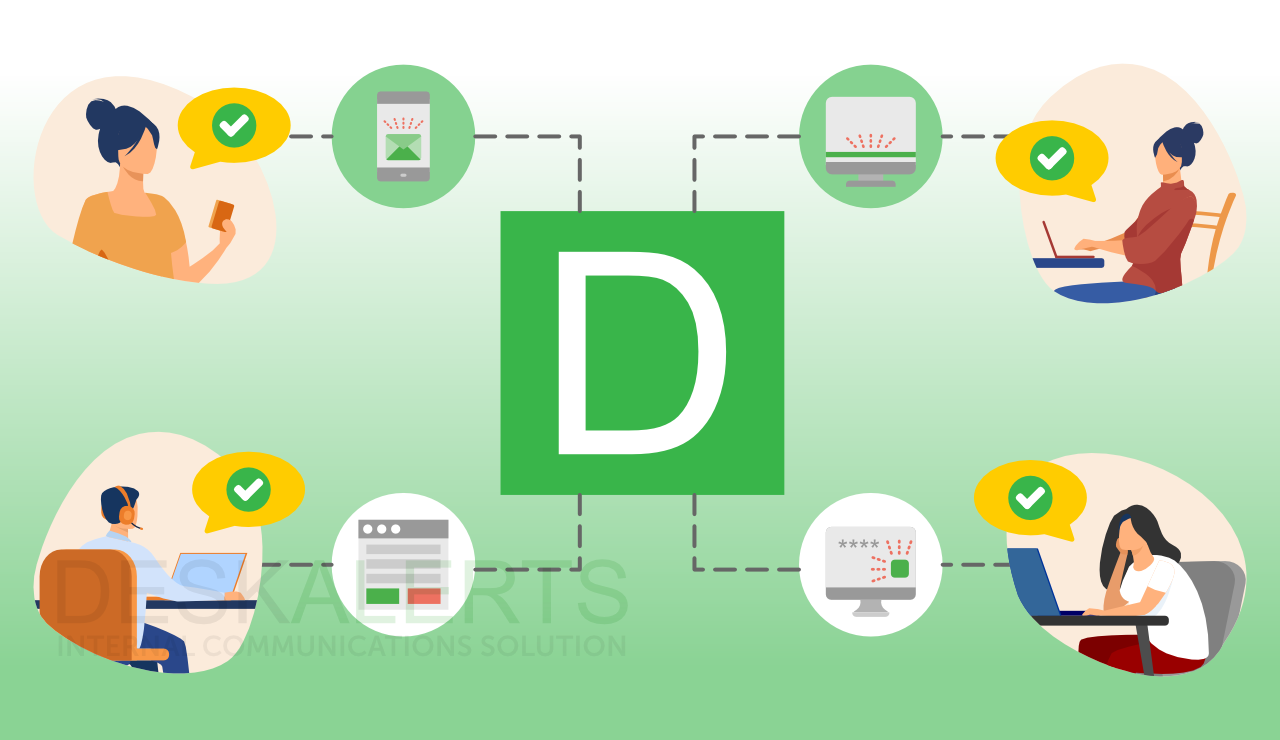6 min read
Bank Training Programs For Employees
In today's rapidly evolving financial landscape, banks must stay ahead of industry changes, regulatory updates, and technological advancements....

Effective communication in the workplace plays an important role in every organization. It can help to eliminate misunderstandings, and helps facilitate the flow of information. No matter who you are communicating with – clients, stakeholders, staff, or colleagues – there are some essential skills that will help you succeed.
If you recognize that communication in your workplace could do with some improvement, try implementing some of these changes to your corporate practices:
Providing opportunities for open dialogue is one of the most effective ways of communication in the workplace. When you encourage your staff to communicate openly, there is a sense that they will be seen and heard – and their opinions matter. When people are asked to give feedback and can contribute in a meaningful way, they feel valued.
For many people, email is one of the banes of modern-day life. Large volumes of emails can be a struggle to manage, and responding to them seems to eat up a lot of time.
But is it really the best example of how to communicate in the workplace? Quite often, the emails people receive can be avoided altogether and it would be quicker and simpler if the person sending the email picked up a phone or stopped by their colleague’s desk to have a face-to-face conversation.
It’s hard to interpret tone when reading an email, which means that often a recipient will take an email in a context that it wasn’t intended. You may cause someone offense.
Likewise, if you aren’t clear in your email communications, the recipient might be confused. Especially if what you say is ambiguous and open to interpretation – the other person may believe something entirely different to what you intended to communicate.
To ensure effective communication in the workplace, always proof-read your emails and ensure you use proper spelling, punctuation and grammar. It can be distracting to your recipients otherwise – and many consider it to be rude and unprofessional.
When you are in a leadership position, you need to have awareness of your own body language and the way people around you react to it.
You should endeavor to communicate with a positive physical presence. Tips include: smiling, maintaining eye contact, keeping arms uncrossed and holding a straight, upright posture.
You should only hold meetings if they are absolutely necessary – too often in the corporate world they are held just for the sake of it, involving an ever-expanding cast of people who don’t really need to be there.
Determine if you really do need that meeting, or if a face-to-face or phone conversation would suffice.
If a meeting is necessary, in the interests of effective communication in the workplace, make sure you set a time limit and an agenda.
When looking at how to communicate effectively at work, consider the way you present your information. You can often get your point across better if you have a relevant graphic to go with it – for example a graph, a photo, or even a light-hearted meme. Many people respond better to visual information, so keep this in mind. Short video clips can also help to reinforce your messaging.
Effective communication in the workplace fosters better collaboration, minimizes misunderstandings, and contributes to a positive work environment. Here are 6 ways to communicate effectively at work:
Effective communication in the workplace takes various forms, each serving distinct purposes. Understanding these diverse modes of communication and knowing when to employ them contributes to a harmonious and productive work environment. Effective ways of communication include:
The four primary types of workplace communication are verbal, written, nonverbal, and digital. Verbal communication involves spoken interactions, fostering real-time understanding. Written communication includes emails, reports, and documentation - the type of communication that leaves a lasting record. Nonverbal cues such as body language and facial expression which convey emotions and intent. Digital communication methods in the workplace utilize technology for instant messaging, video calls, and virtual collaboration, bridging geographical gaps. Balancing these communication types ensures effective information exchange, collaboration, and a cohesive work atmosphere.
Effective communication in the workplace is essential for building strong relationships, resolving conflict, and achieving common goals. It is a skill that can be learned and improved with practice. Effective communication is a two-way street that requires both parties to be engaged and present. It is about listening to understand, not just to respond. It is about being clear and concise in your communication and being respectful of the other person's time and space.
Here are a few examples of how to communicate effectively at work:
How to communicate in the workplace? The best communication style at work is clear, concise, and respectful, which is essential for effective communication in the workplace. This means being able to articulate your thoughts and ideas clearly and being able to listen to and understand the perspectives of others. It is also important to pay attention to the question of how to communicate professionally and be respectful of others' time and opinions.
Here are some tips for effective communication in the workplace:

6 min read
In today's rapidly evolving financial landscape, banks must stay ahead of industry changes, regulatory updates, and technological advancements....

7 min read
Employee safety programs are not just a regulatory requirement; they are a strategic imperative for modern businesses. By prioritizing safety,...